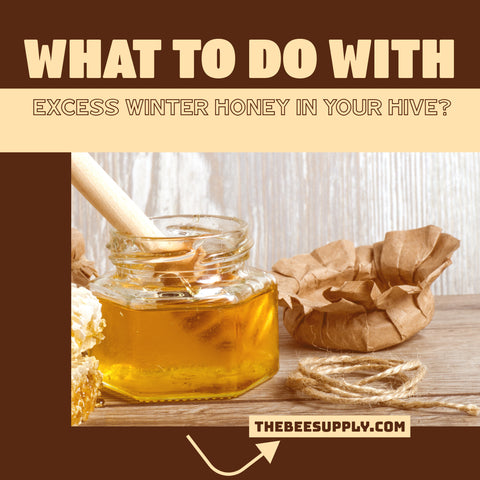WHAT TO DO WITH EXCESS WINTER HONEY IN YOUR HIVE?

By Blake Shook
It is not uncommon to come out of the winter months with an extra box of honey on a hive. I see this most commonly if:
- The hive had more than two boxes full or almost full of honey going into winter.
- The hive dwindled significantly in strength (80% loss or more) over the course of the winter and couldn’t eat nearly what was stored. A common cause of significant dwindle is Varroa issues.
Depending on how great the discrepancy between honey stored and the bee population is, you may or may not have to do anything about it. The bees will consume the honey as they grow in the spring. Excess honey isn’t going to hurt the hive coming out of winter. However, eventually, the bees will begin refilling the boxes once the new honey flow begins.
I recommend taking action regarding excess honey at only two times:
- There are boxes of honey above the two brood boxes, and you are approaching the main honey flow. If you didn’t feed in the fall, the honey isn’t granulated, and you didn’t do a mite treatment with the honey supers on, you can just harvest this honey. If you can’t harvest it, you can simply place the super standing on end 30–40 feet away from your hives and let the bees rob the honey out. If the days are warm, it should take only a day or two. Once they have cleaned the honey out, you can store the super or put it back on your hive to allow them to begin storing fresh nectar.
- The brood boxes are so packed with honey that the queen has nowhere to lay as the hive expands. This will be evident by a few frames’ being full of brood but every other frame is packed with honey, leaving nowhere for the queen to continue laying. In brood boxes, about 70% of the frames should be available for brood rearing this time of year, and the remaining 30% can be full of honey. Check out this article “Fixing Honey Bound Hives'' to learn more about this issue.
Here's a quick video on how to address a honey bound hive.

